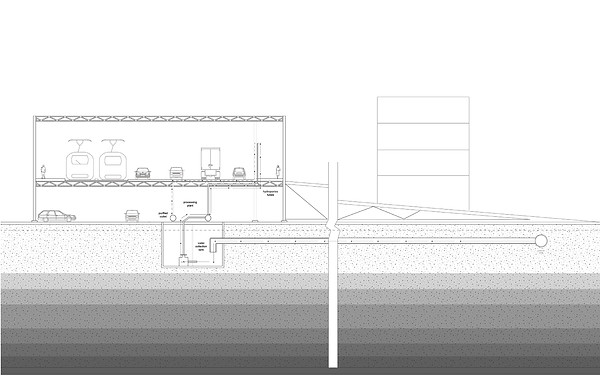CHLOE LUI
PROJECTS
Quay to the Port
Superstudio
Site: Portlands Toronto
Instructors: Michael Piper, Fadi Masoud, Mauricio Quirós
Group members: Ambika Pharma, Michaela Gomes, Nassim Sani
This project aims to reactivate and develop Portlands Toronto as a port through the powers of three constituencies; Ports Toronto, Urban Growers, and Waterfront Toronto.
Historic shipping ports used to be integrated within the urban fabric it bordered. With the development of new industries, economic demand, and forms of containerization, which used to be a semi-public and semi-infrastructure for urban regions became a standardized import and export point. The need for water trade reduced with advances in technology and ports around the globe began to gain the identity of decommissioned or low-density typologies associated with declining industries. Entering the 21st century, the demand on sea routes and, by extension, port infrastructure is gaining attention.
Sea level rise has begun to increase as the effects of global warming have begun to melt ice sheets and glaciers. Ice melt in Arctic regions has begun to realize the possibility of expanding travel routes-like the Northwest Passage- as a shortcut for international shipping, cargo ships, cruise ships and private individuals that are no longer limited to icebreaker vessels. Predictions of 'ice bridges' north of the Northwest Passage are predicted to retreat northwards and reduce in the next five to ten years. This major passage will open due to rising temperatures and increasing prices for resources that will transform the Northwest Passage into a major international shipping route. This potential scenario inherently suggests that the intensification of sea trade is a realistic globalization trend of the future – along with all the environmental and security challenges that would bring. This implies that more local water routes and seaways like St. Lawrence will play important bridging points for smaller-scale water networks. Through the value of ports and related trades have lost their prominence over the past century, many ports around the world are still active. The growth of urban fabric around ports depends on the geographical and political dominance of the trade industry active in each region. Port-Induced, Port-Dependent and Port-Attracted industries shape the way water route infrastructure is connected to the city.
The proposed evolution of port cities and their underlying infrastructure depends on the ever-changing needs of the trade industries that connect global ports. The network of innovation does not only apply to urban transit systems, but it could also resolve current global issues in the ports industry. Ports that want to be more competitive would have to tackle problems like globalization, sustainability, supporting transit systems, and technological innovations. Incorporation with Waterfront Toronto and Urban Growers, new forms of transit models, residential developments could initiate, support and re-imagine a port of the 21st century.

















